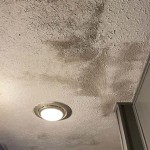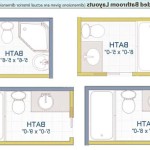Building Regulations for Fans in Bathrooms
Bathrooms are by nature humid environments, a consequence of showering, bathing, and other water-related activities. This humidity can lead to a number of problems, including mold growth, mildew, and unpleasant odors. To combat these issues, building regulations often mandate the installation of bathroom exhaust fans. These fans play a vital role in maintaining healthy and comfortable living spaces. This article delves into the key building regulations related to bathroom fans, providing clarity on their purpose, installation requirements, and the importance of compliance.
Purpose of Bathroom Exhaust Fans
The primary function of a bathroom exhaust fan is to remove excess moisture and stale air from the room. When water evaporates from showers, baths, and sinks, it increases the humidity levels in the bathroom. This excess moisture, if left unchecked, can create a breeding ground for harmful microorganisms. A properly functioning exhaust fan helps to:
- Reduce humidity: Removing moist air from the bathroom helps to prevent condensation on surfaces, which can lead to mold and mildew growth.
- Eliminate odors: Bathroom exhaust fans effectively remove unpleasant odors associated with bathing and toileting activities.
- Improve air quality: By exchanging stale air with fresh air from outside, bathroom fans promote better air circulation and improve overall air quality.
- Prevent damage: High levels of humidity can damage building materials, particularly wood and drywall. Exhaust fans help to minimize this risk.
Key Building Regulations for Bathroom Fans
Building codes and regulations vary from jurisdiction to jurisdiction, but some common requirements regarding bathroom fans include:
- Required in all bathrooms: In most cases, building codes mandate the installation of exhaust fans in all bathrooms, regardless of size. This ensures adequate ventilation for all occupants.
- Minimum CFM (Cubic Feet per Minute) rating: Ventilation regulations usually specify a minimum CFM rating for bathroom exhaust fans. This rating indicates the volume of air that the fan can move per minute. The necessary CFM rating is often determined by the size of the bathroom and the number of fixtures.
- Proper venting: The exhaust duct should be vented to the exterior of the building to ensure that the air is effectively removed. The duct should be properly sized and sealed to prevent air leaks and maintain optimal performance.
- Location and accessibility: The fan should be located near the shower or tub to effectively capture steam and moisture. It should also be easily accessible for maintenance and cleaning.
- Switch location: The fan switch should be conveniently located outside the bathroom, typically near the entrance door. This allows for convenient operation even when the bathroom door is closed.
- Fan timer: Some regulations require the installation of a timer on the fan switch to ensure that the fan continues to operate for a set period of time after the shower or bath is finished. This allows sufficient time for moisture to be removed from the bathroom.
Compliance and Impact of Building Regulations
Adhering to building regulations for bathroom fans is not just about compliance – it's crucial for maintaining a healthy and safe living environment. Compliance offers several benefits:
- Protection from moisture damage: Installing bathroom fans according to building regulations helps to minimize the risk of water damage to the bathroom and surrounding areas. This reduces the potential for costly repairs and renovations.
- Reduced health risks: Proper ventilation helps to prevent mold and mildew growth, which can pose serious health risks, particularly for people with allergies or respiratory issues.
- Improved home value: Homes that meet building codes and feature properly installed bathroom fans are generally considered more desirable by potential buyers, which can positively impact resale value.
- Enhanced comfort: Well-ventilated bathrooms are more comfortable to use, reducing the risk of feeling stuffy or experiencing unpleasant odors.
To ensure compliance with building regulations, it is essential to consult local codes and ordinances and engage qualified professionals for the installation and maintenance of bathroom fans. By prioritizing ventilation and adhering to these regulations, homeowners can create a healthy, comfortable, and moisture-free bathroom environment.

Bathroom Regulations Vent Axia

Bathroom Zoning Ip Ratings For Ventilation Envirovent

Bathroom Regulations Vent Axia

Extractor Fan World S Guide To Bathroom Zones

Choosing The Right Bathroom Fan

Building Regulations For Fans In Domestic Property

What Air Extractor Fans To Site In Each Room For A Good Extraction Manrose Advice
.jpg?strip=all)
Building Regulation Basics For Domestic Ventilation

Bathroom Zones What Are They I Blogs It

Can I Fit A Spur In Bathroom Spurs Bathrooms Bs 7671
Related Posts







